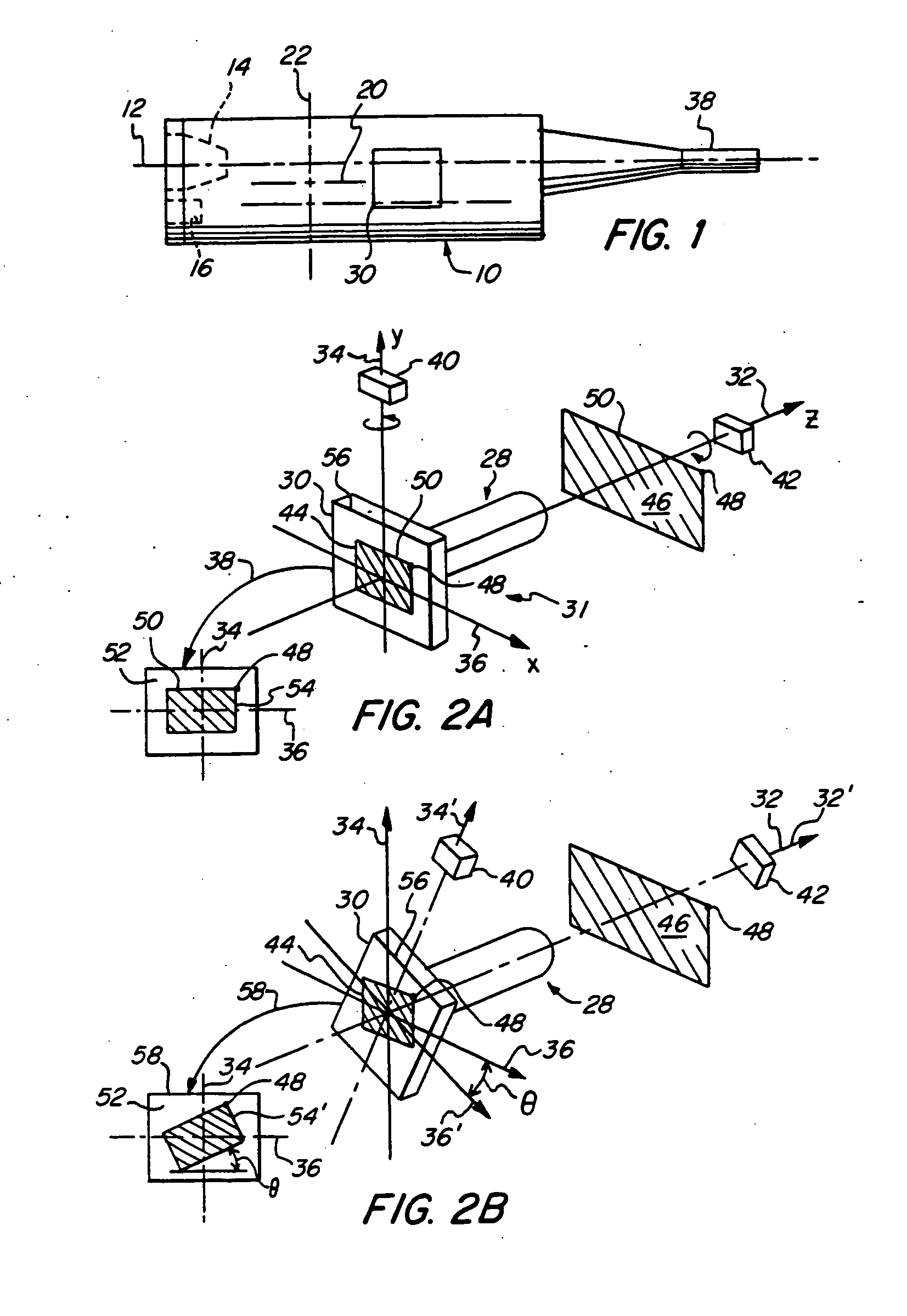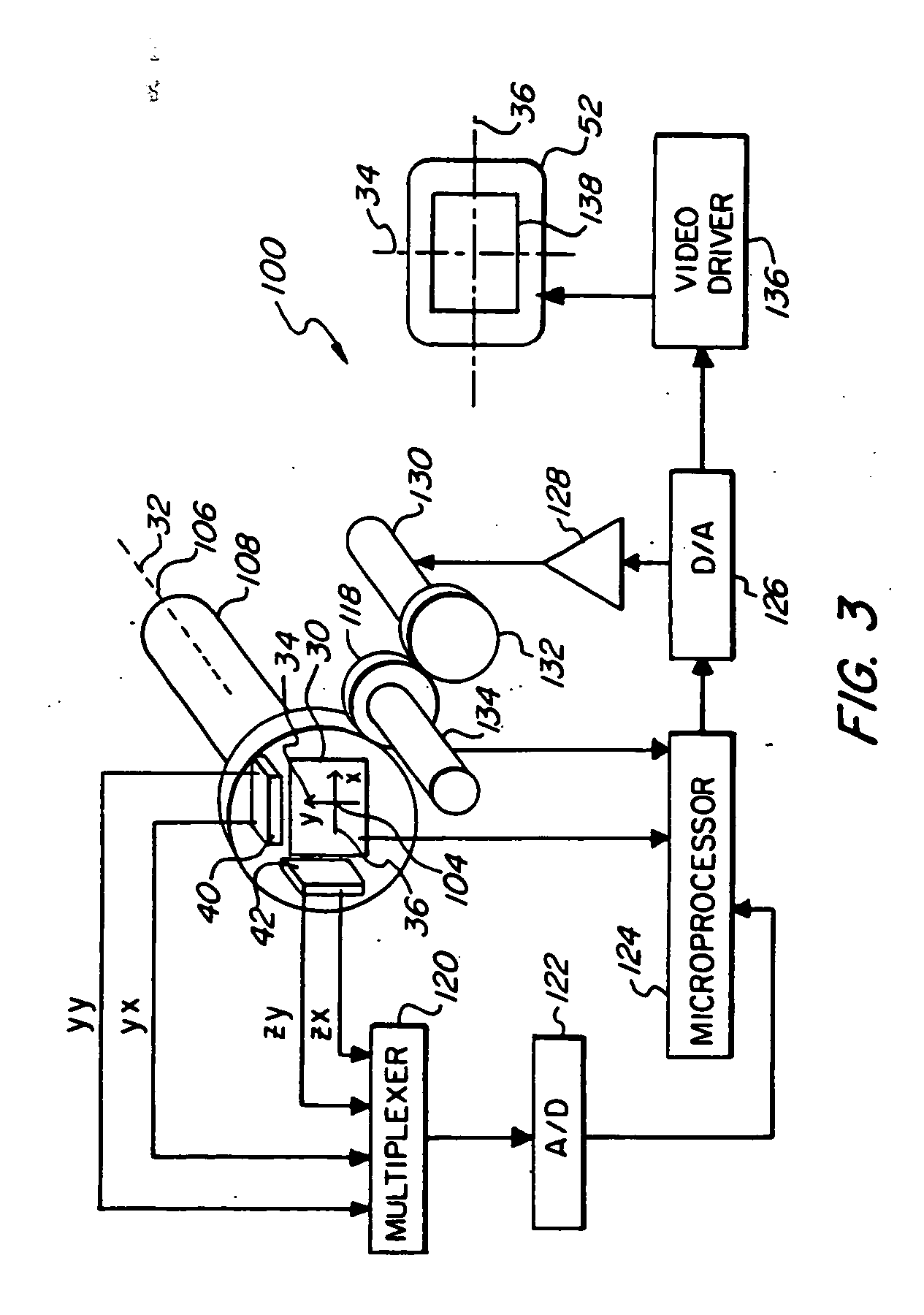Image orientation for endoscopic video displays
a video display and image orientation technology, applied in the field of video displays, can solve the problems of not receiving a sufficient force for the mechanical pendulum to seek the vertical, requiring enlargement of the instrument, and not being able to manually rotate the camera
- Summary
- Abstract
- Description
- Claims
- Application Information
AI Technical Summary
Benefits of technology
Problems solved by technology
Method used
Image
Examples
first embodiment
[0051] In a first embodiment shown in FIG. 3, two accelerometers 40, 42 are used to determine angular rotation of image sensor 30 about its optical z-axis 32. When in use, the endoscope will have freedom to tilt in all directions so that the accelerometer will often be responding to a component of vertical gravitational force that is considerably less than its maximum value. In some instances the camera enters the anatomy at an angle that is so extreme that it becomes difficult to determine, by use of a single gravity sensor, in which direction or how much of an automatic angular compensation is required. For example, when z-axis 32 is depressed 60 degrees, the vertical component of gravity to which first accelerometer 42 refers while keeping the image upright is much less than maximum gravity force. The second accelerometer 40 is oriented so that the vertical component of gravity upon it increases as z- axis 32 is depressed. Thus the angular offset required can be derived from the ...
embodiment 300
[0065] Referring to FIG. 5, an alternative embodiment 300 is illustrated wherein the optical image is rotated before reaching the image sensor 304. In this embodiment, the optical image is rotated rather than the image sensor, to accommodate angular rotation of the endoscope about its optical axis. In an illustrative example of this invention, a prism 302 is interposed between the return of the image from the endoscope's distal end 338 and an image sensor 304 at the proximal end. Prism 302 is of a design that rotation of the prism causes a rotation of an output image for a fixed input image and is described in further detail herein below.
[0066] A lens 306 for focusing of the optical image on image sensor 304 may be interposed between prism 302 and image sensor 304. Prism 302 is fixedly disposed on a rotating member 308 whereby a rotation of rotating member 308 rotates prism 302 an equivalent angular amount. For simplicity, prism 302, object lens 306, and image sensor 304 are all sho...
PUM
 Login to View More
Login to View More Abstract
Description
Claims
Application Information
 Login to View More
Login to View More - R&D
- Intellectual Property
- Life Sciences
- Materials
- Tech Scout
- Unparalleled Data Quality
- Higher Quality Content
- 60% Fewer Hallucinations
Browse by: Latest US Patents, China's latest patents, Technical Efficacy Thesaurus, Application Domain, Technology Topic, Popular Technical Reports.
© 2025 PatSnap. All rights reserved.Legal|Privacy policy|Modern Slavery Act Transparency Statement|Sitemap|About US| Contact US: help@patsnap.com



